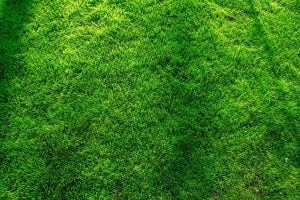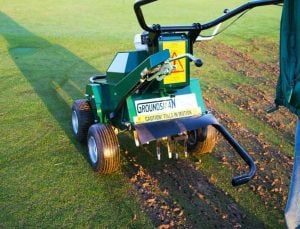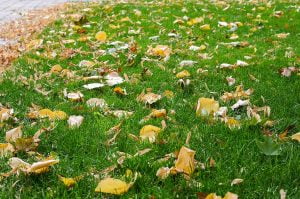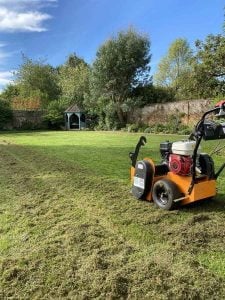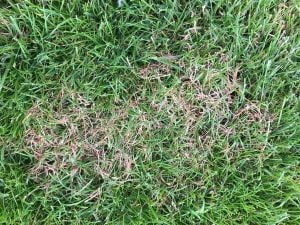Is the hot dry weather making your lawn look worse for wear? Read on for essential advice to help your lawn recover and make it look green and healthy again.
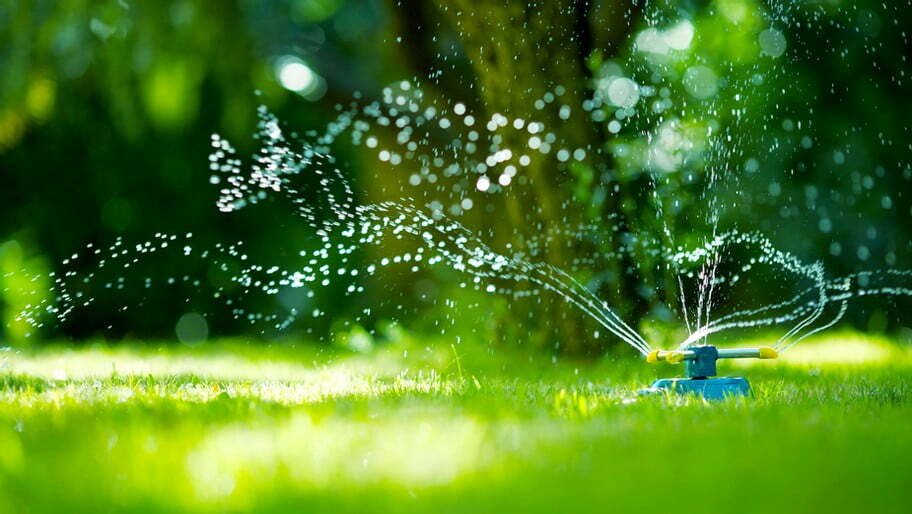
2018 has been a challenging time for lawns, with snow in February and March, a very wet late Spring period, followed by exceptionally low rain and above average temperatures in June and July. Many lawns have turned from a lush green to a lifeless light brown colour as a result of the recent hot and dry weather.
Don’t worry! Grass is very resilient and it’s normal for it to lose its green colour when it’s hot and dry, halting its growth to conserve water and nutrients. When the grass gets sufficient water via rain or watering the lawn, it will come back to life but may take a few weeks to get there.
So what can be done to help the lawn recover?
Water
Lawns will dry out at different rates depending on the soil type; sandy free draining soils will be very quick to dry out but clay soils retain more moisture and nutrients. In Surrey and West Sussex as of late July there no water restrictions in place and indications are there won’t be a hosepipe ban. We are mindful of the need to be responsible with water so perhaps consider using rainwater collection systems for the future or re-using water that’s used in the house.
The only way to stop the lawn turning brown or to help it return to a healthy green colour, if possible, water the lawn 1-2 times a week for 30-60 minutes with a sprinkler to get the top few cm of soil to become moist. Even though the lawn may be looking worse for wear now, having a deep watering every week until we get enough rainfall, will bring the lawn back to life sooner. Remember to only water early morning or late evening, otherwise the heat of the day will evaporate much of the water and risks scorching the grass.
Mowing
We advise to only cut the lawn if it’s needed. Raise the mower cut height to allow the grass to be longer than you would normally have it. Leave the collection box off the mower, if safe to do so. If you have a mulching function on your mower and you still have some green grass, that will be a good option too. These options will retain much needed water in the grass blade and create a canopy to shade the soil and limit water evaporation. If the lawn has gone dormant and brown it’s best to hold off mowing until it recovers.
How Lawn Tiger can help?
Lawn Nutrition
Customers on our lawn care plans will be due the Summer lawn treatment early August. Lawn Tiger uses premium quality 100% coated, slow release fertiliser that’s specially designed for Summer and the current hot/dry conditions. Not all fertilisers are suitable but we can confidently stand behind our product choice. This means its safe to apply and won’t scorch the grass. Once your lawn receives sufficient water, the fertiliser will activate and improve the lawn’s condition.
Some customers may ask to wait until the seasonal rain re-appears, but having fertiliser in place will shorten the lawn’s recovery time, compared to not having the fertiliser applied. You do not have to water your lawn after the fertiliser has been applied but as your grass needs water to survive it would be grateful for the drink!
Lawn weed control
Weeds may stand out more now as the normal lush green grass has reduced and some weeds like plantains, dandelions remain green as they have deep tap roots that can access water the grass can’t. In Summer we only spot treat weeds, rather than blanket spray the entire lawn to reduce grass scorch risk. In prolonged dry spells, where you may not have been able to keep the lawn watered, there is a risk of scorching the grass, even for spot treatments, so we will assess each lawn individually to make sure we do what’s best for the lawn. Rest assured any weeds will be tackled again in the Autumn treatment.
Lawn Disease Control
Once the rains reappear (soon please!) there is an increased risk for lawn diseases appearing which can kill of sections of the lawn and make it look unsightly. Red Thread is particularly common. We can advise on the most appropriate treatment and can apply professional fungicide to stop the spread of the disease over the entire lawn. Having our fertiliser treatment in place will lead to more healthy and disease resistant grass too. Contact us if you have any concerns or queries.
Scarification
Dry lawns are likely to have a lot of straw like dead grass that will remain in place, even once sufficient moisture is available, and will build up the unhealthy thatch layer. If you are concerned about the lawn’s appearance, you may need to consider having it scarified early Autumn, if not already booked in. We can effectively revive the lawn and remove all the waste too. Read more here.
Aeration
As the soil dries it becomes more compacted, especially on clay soils. If you don’t already have aeration in your lawn care plan, we would highly recommend booking it in for Autumn, when the soil will be suitable for our professional machines. If will benefit the lawn greatly over the following year. Read more here.
Lawn Hydration Treatment
To help prepare for hot dry spells in the future, we can offer our special Lawn Hydration treatment that will optimise the uptake of water in the soil meaning less watering is needed to retain a healthy green vigour. It’s best applied every few weeks starting in Spring. It can also help cure a condition called “dry patch” by breaking down a waxy substance that builds up in the soil in dry weather. Dry patch means the soil will not absorb water and will kill off the grass. Our lawn hydration treatment will need a good watering in afterwards to make it effective, plus regular watering each week (or as needed). If you are not in a position to water your lawn, this treatment may not give the desired results. Read more here.
Lawn Repairs
If your lawn has areas that are beyond recovery from from the hot dry weather, we can repair the patches effectively with our premium coated lawn seed, pre-seed fertiliser and top dressing. For small patches, we advise to wait until the dry spell has passed or ideally late August/early Autumn to get the best results. If you have large sections needing some attention, we advise to wait for early Autumn. After the patch repairs, you will need to water daily to stop the seed/new shoots and soil drying out.
Let’s hope for some decent rainfall sometime soon to help our our lawns and gardens!

